Description
STUDIES ON THE BIOLOGY OF SILVER CATFISH (CHRYSICHTHYS NIGRODIGITATUS LACÈPÈDE 1803) IN JEBBA LAKE, NIGERIA
ABSTRACT
Studies on the biology of silver catfish Chrysichthys nigrodigitatus (Lacèpède, 1803) in Jebba Lake, Nigeria was carried out between January 2009 and December 2010. Samples collected using fleets of experimental gillnets were used for the study. There was fluctuations in the physico-chemical parameters measured; mean electrical conductivity (66.41±13.89μs/cm), and mean phosphate (0.20±0.15mg/l), which was significantly different (p<0.05) at the zones. The males and females showed allometric (2.49) and isometric (3.18) growth pattern respectively, with strong relationship and direct proportionality between length-length for males (0.93) and females (0.83). The condition factor for males (K=1.74) and females (K=1.83) showed that the lake was conducive for the survival of the fish because it was greater than 1. The positive correlations in the morphometric parameters, and the meristic counts confirmed the presence of the species in the lake. The age structure was between 0+ and 3+ with bulk of the samples within ranges of 2 and 2+, males being bigger than females. Size distribution ranged from small to adult, with few adults in the population. Chrysichthys nigrodigitatus has the tendency to grow bigger based on the growth performance index. Nine (9) major items ingested by C. nigrodigitatus ranged from plant materials (21.75%) to animal components (55.65%), which vary in abundance across months and seasons. Juveniles and sub-adult fed predominantly on insects (36.72% and 28.69), while adults on fry (27.86%). There was a direct relationship between the size of fish and ingested food items. Prey importance index showed insects (57.61%), insects (53.70%) and fry (39.65%) as the most important items ingested by juveniles, sub-adults and adults, respectively. There was high feeding intensity due to few number of fish stomachs without food. Chrysichthys nigrodigitatus is an omnivore with moderate gut length. There were more males than females (1.77:1) in the population. More gravid females were recorded in August and September, which coincide with the period of spawning. Gonad maturity showed stages I-VI, males attained first maturity than females. Female C. nigrodigitatus had higher gonado-somatic index (9.73) than males (1.32) especially during the wet season. Mean fecundity ranged between 1,670-3,375 eggs, which increase with increased in fish size. Chrysichthys nigrodigitatus was the most abundant species both within the family Claroteidae (13.06%) and in the overall catch (8.95%) during wet than dry seasons, dominant in zones I and II during the wet season, and commonly found at the bottom of the lake. It is recommended that morphometric and meristic parameters be used to identify the fish, study on population structure to reveal more class sizes be done, culture trials should also be done, and the feed components to be plant and animals materials.
1.1 Background
Fish is a resource mostly exploited by man and is basically linked to the trophic chain in the entire environment where they are commonly found (Craig et al., 2004). Inland waters of Nigeria consist of water bodies that support a wide array of aquatic organisms, which includes phytoplankton, zooplanktons, crustaceans, and vertebrates such as fish, crocodile, and aquatic mammals (Atobatele and Ugwumba, 2008).
Fishes found in the tropics and tropical water bodies experience changes in their biological parameters and activities due to fluctuations in factors such as food composition and availability, spawning rate, and other environmental factors. Welcomme (2001) reported that factors such as fishing, pollution and eutrophication among others could bring about series of changes in fish size, species composition and abundance in the aquatic environment. Similarly, Bisht et al. (2009) and Soyinka et al. (2010) reported that changes in environmental factors such as water quality, depth, water current, availability of food and substratum influence the occurrence of fish fauna, abundance and distribution.
Despite massive world-wide development efforts, in terms of many laudable programmes and ways to reduce poverty and improve livelihoods in fisheries and other sectors of the economy, poverty remains a nightmare for millions of Africans. In West Africa alone, seven million people are involved in fishing, aquaculture and related activities, such as processing and trading because it is a major source of livelihoods in many coastal communities, both inland and on the Atlantic coast. In addition to providing employmentand income, fisheries play a very important role in local and national economies (Komolafe and Arawomo, 2011). Nigeria is the largest consumer of fish in Africa with an approximately 1.2 million tonnes of fish needed annually to satisfy the demand of the ever increasing population. FAO (2000) estimated fish demand for Nigeria from 1997 – 2025, based on projected population and gave an average of 1.11 million tonnes for a decade (2000 – 2010). The country is highly blessed and endowed with vast expanse of inland freshwater and brackish ecosystems with abundant fish species, which have potentials for culture. These water bodies also play an important role in the provision of protein to Nigerians, especially now that imported fish is becoming expensive to the common man (Komolafe and Arawomo, 2011).
Freshwater is a very important natural resource crucial for the survival of all living beings. UNESCO (2003)reported that water is the most vital resource for all kinds of life on earth and essential for sustainability of the earth’s crust ecosystem. The quality of life depends on the quality of water. Physico – chemical factors are important in estimating the constituents of water and concentration of pollutants or contaminants. These factors are interrelated and interdependent with biological factors (plants and animals). Similarly, these factors immensely influenced the uses as well as the distribution and richness of biota (Unanam and Akpan, 2006). Physical parameters of water bodes include water movement, depth, turbidity, transparency, temperature and suspended solids. Chemical parameters include pH, dissolved oxygen, carbonates, bicarbonates, nitrate, phosphate, carbon dioxide, cations and anions and dissolved organic matters (Mustapha and Omotosho, 2005).
Growth is simply defined as change in size (length, weight and bulk) with time and can also be change in numbers with time in the case of population (Abowei and Ezekiel,2013).








Reviews
There are no reviews yet.